
Writing a Counselling Case Study
As a counselling student, you may feel daunted when faced with writing your first counselling case study. Most training courses that qualify you as a counsellor or psychotherapist require you to complete case studies.
Before You Start Writing a Case Study

However good your case study, you won’t pass if you don’t meet the criteria set by your awarding body. So before you start writing, always check this, making sure that you have understood what is required.
For example, the ABC Level 4 Diploma in Therapeutic Counselling requires you to write two case studies as part of your external portfolio, to meet the following criteria:
- 4.2 Analyse the application of your own theoretical approach to your work with one client over a minimum of six sessions.
- 4.3 Evaluate the application of your own theoretical approach to your work with this client over a minimum of six sessions.
- 5.1 Analyse the learning gained from a minimum of two supervision sessions in relation to your work with one client.
- 5.2 Evaluate how this learning informed your work with this client over a minimum of two counselling sessions.
If you don’t meet these criteria exactly – for example, if you didn’t choose a client who you’d seen for enough sessions, if you described only one (rather than two) supervision sessions, or if you used the same client for both case studies – then you would get referred.
Check whether any more information is available on what your awarding body is looking for – e.g. ABC publishes regular ‘counselling exam summaries’ on its website; these provide valuable information on where recent students have gone wrong.
Selecting the Client
When you reflect on all the clients you have seen during training, you will no doubt realise that some clients are better suited to specific case studies than others. For example, you might have a client to whom you could easily apply your theoretical approach, and another where you gained real breakthroughs following your learning in supervision. These are good ones to choose.
Opening the Case Study
It’s usual to start your case study with a ‘pen portrait’ of the client – e.g. giving their age, gender and presenting issue. You might also like to describe how they seemed (in terms of both what they said and their body language) as they first entered the counselling room and during contracting.

If your agency uses assessment tools (e.g. CORE-10, WEMWBS, GAD-7, PHQ-9 etc.), you could say what your client scored at the start of therapy.
Free Handout Download
Writing a Case Study: 5 Tips
Describing the Client’s Counselling Journey
This is the part of the case study that varies greatly depending on what is required by the awarding body. Two common types of case study look at application of theory, and application of learning from supervision. Other possible types might examine ethics or self-awareness.
Theory-Based Case Studies
If you were doing the ABC Diploma mentioned above, then 4.1 would require you to break down the key concepts of the theoretical approach and examine each part in detail as it relates to practice. For example, in the case of congruence, you would need to explain why and how you used it with the client, and the result of this.
Meanwhile, 4.2 – the second part of this theory-based case study – would require you to assess the value and effectiveness of all the key concepts as you applied them to the same client, substantiating this with specific reasons. For example, you would continue with how effective and important congruence was in terms of the theoretical approach in practice, supporting this with reasoning.
In both, it would be important to structure the case study chronologically – that is, showing the flow of the counselling through at least six sessions rather than using the key concepts as headings.
Supervision-Based Case Studies
When writing supervision-based case studies (as required by ABC in their criteria 5.1 and 5.2, for example), it can be useful to use David Kolb’s learning cycle, which breaks down learning into four elements: concrete experience, reflective observation, abstract conceptualisation and active experimentation.
Rory Lees-Oakes has written a detailed guide on writing supervision case studies – entitled How to Analyse Supervision Case Studies. This is available to members of the Counselling Study Resource (CSR).
Closing Your Case Study
In conclusion, you could explain how the course of sessions ended, giving the client’s closing score (if applicable). You could also reflect on your own learning, and how you might approach things differently in future.
- Bipolar Disorder
- Therapy Center
- When To See a Therapist
- Types of Therapy
- Best Online Therapy
- Best Couples Therapy
- Best Family Therapy
- Managing Stress
- Sleep and Dreaming
- Understanding Emotions
- Self-Improvement
- Healthy Relationships
- Student Resources
- Personality Types
- Guided Meditations
- Verywell Mind Insights
- 2023 Verywell Mind 25
- Mental Health in the Classroom
- Editorial Process
- Meet Our Review Board
- Crisis Support
What Is a Case Study?
Weighing the pros and cons of this method of research
Kendra Cherry, MS, is a psychosocial rehabilitation specialist, psychology educator, and author of the "Everything Psychology Book."
:max_bytes(150000):strip_icc():format(webp)/IMG_9791-89504ab694d54b66bbd72cb84ffb860e.jpg)
Cara Lustik is a fact-checker and copywriter.
:max_bytes(150000):strip_icc():format(webp)/Cara-Lustik-1000-77abe13cf6c14a34a58c2a0ffb7297da.jpg)
Verywell / Colleen Tighe
- Pros and Cons
What Types of Case Studies Are Out There?
Where do you find data for a case study, how do i write a psychology case study.
A case study is an in-depth study of one person, group, or event. In a case study, nearly every aspect of the subject's life and history is analyzed to seek patterns and causes of behavior. Case studies can be used in many different fields, including psychology, medicine, education, anthropology, political science, and social work.
The point of a case study is to learn as much as possible about an individual or group so that the information can be generalized to many others. Unfortunately, case studies tend to be highly subjective, and it is sometimes difficult to generalize results to a larger population.
While case studies focus on a single individual or group, they follow a format similar to other types of psychology writing. If you are writing a case study, we got you—here are some rules of APA format to reference.
At a Glance
A case study, or an in-depth study of a person, group, or event, can be a useful research tool when used wisely. In many cases, case studies are best used in situations where it would be difficult or impossible for you to conduct an experiment. They are helpful for looking at unique situations and allow researchers to gather a lot of˜ information about a specific individual or group of people. However, it's important to be cautious of any bias we draw from them as they are highly subjective.
What Are the Benefits and Limitations of Case Studies?
A case study can have its strengths and weaknesses. Researchers must consider these pros and cons before deciding if this type of study is appropriate for their needs.
One of the greatest advantages of a case study is that it allows researchers to investigate things that are often difficult or impossible to replicate in a lab. Some other benefits of a case study:
- Allows researchers to capture information on the 'how,' 'what,' and 'why,' of something that's implemented
- Gives researchers the chance to collect information on why one strategy might be chosen over another
- Permits researchers to develop hypotheses that can be explored in experimental research
On the other hand, a case study can have some drawbacks:
- It cannot necessarily be generalized to the larger population
- Cannot demonstrate cause and effect
- It may not be scientifically rigorous
- It can lead to bias
Researchers may choose to perform a case study if they want to explore a unique or recently discovered phenomenon. Through their insights, researchers develop additional ideas and study questions that might be explored in future studies.
It's important to remember that the insights from case studies cannot be used to determine cause-and-effect relationships between variables. However, case studies may be used to develop hypotheses that can then be addressed in experimental research.
Case Study Examples
There have been a number of notable case studies in the history of psychology. Much of Freud's work and theories were developed through individual case studies. Some great examples of case studies in psychology include:
- Anna O : Anna O. was a pseudonym of a woman named Bertha Pappenheim, a patient of a physician named Josef Breuer. While she was never a patient of Freud's, Freud and Breuer discussed her case extensively. The woman was experiencing symptoms of a condition that was then known as hysteria and found that talking about her problems helped relieve her symptoms. Her case played an important part in the development of talk therapy as an approach to mental health treatment.
- Phineas Gage : Phineas Gage was a railroad employee who experienced a terrible accident in which an explosion sent a metal rod through his skull, damaging important portions of his brain. Gage recovered from his accident but was left with serious changes in both personality and behavior.
- Genie : Genie was a young girl subjected to horrific abuse and isolation. The case study of Genie allowed researchers to study whether language learning was possible, even after missing critical periods for language development. Her case also served as an example of how scientific research may interfere with treatment and lead to further abuse of vulnerable individuals.
Such cases demonstrate how case research can be used to study things that researchers could not replicate in experimental settings. In Genie's case, her horrific abuse denied her the opportunity to learn a language at critical points in her development.
This is clearly not something researchers could ethically replicate, but conducting a case study on Genie allowed researchers to study phenomena that are otherwise impossible to reproduce.
There are a few different types of case studies that psychologists and other researchers might use:
- Collective case studies : These involve studying a group of individuals. Researchers might study a group of people in a certain setting or look at an entire community. For example, psychologists might explore how access to resources in a community has affected the collective mental well-being of those who live there.
- Descriptive case studies : These involve starting with a descriptive theory. The subjects are then observed, and the information gathered is compared to the pre-existing theory.
- Explanatory case studies : These are often used to do causal investigations. In other words, researchers are interested in looking at factors that may have caused certain things to occur.
- Exploratory case studies : These are sometimes used as a prelude to further, more in-depth research. This allows researchers to gather more information before developing their research questions and hypotheses .
- Instrumental case studies : These occur when the individual or group allows researchers to understand more than what is initially obvious to observers.
- Intrinsic case studies : This type of case study is when the researcher has a personal interest in the case. Jean Piaget's observations of his own children are good examples of how an intrinsic case study can contribute to the development of a psychological theory.
The three main case study types often used are intrinsic, instrumental, and collective. Intrinsic case studies are useful for learning about unique cases. Instrumental case studies help look at an individual to learn more about a broader issue. A collective case study can be useful for looking at several cases simultaneously.
The type of case study that psychology researchers use depends on the unique characteristics of the situation and the case itself.
There are a number of different sources and methods that researchers can use to gather information about an individual or group. Six major sources that have been identified by researchers are:
- Archival records : Census records, survey records, and name lists are examples of archival records.
- Direct observation : This strategy involves observing the subject, often in a natural setting . While an individual observer is sometimes used, it is more common to utilize a group of observers.
- Documents : Letters, newspaper articles, administrative records, etc., are the types of documents often used as sources.
- Interviews : Interviews are one of the most important methods for gathering information in case studies. An interview can involve structured survey questions or more open-ended questions.
- Participant observation : When the researcher serves as a participant in events and observes the actions and outcomes, it is called participant observation.
- Physical artifacts : Tools, objects, instruments, and other artifacts are often observed during a direct observation of the subject.
If you have been directed to write a case study for a psychology course, be sure to check with your instructor for any specific guidelines you need to follow. If you are writing your case study for a professional publication, check with the publisher for their specific guidelines for submitting a case study.
Here is a general outline of what should be included in a case study.
Section 1: A Case History
This section will have the following structure and content:
Background information : The first section of your paper will present your client's background. Include factors such as age, gender, work, health status, family mental health history, family and social relationships, drug and alcohol history, life difficulties, goals, and coping skills and weaknesses.
Description of the presenting problem : In the next section of your case study, you will describe the problem or symptoms that the client presented with.
Describe any physical, emotional, or sensory symptoms reported by the client. Thoughts, feelings, and perceptions related to the symptoms should also be noted. Any screening or diagnostic assessments that are used should also be described in detail and all scores reported.
Your diagnosis : Provide your diagnosis and give the appropriate Diagnostic and Statistical Manual code. Explain how you reached your diagnosis, how the client's symptoms fit the diagnostic criteria for the disorder(s), or any possible difficulties in reaching a diagnosis.
Section 2: Treatment Plan
This portion of the paper will address the chosen treatment for the condition. This might also include the theoretical basis for the chosen treatment or any other evidence that might exist to support why this approach was chosen.
- Cognitive behavioral approach : Explain how a cognitive behavioral therapist would approach treatment. Offer background information on cognitive behavioral therapy and describe the treatment sessions, client response, and outcome of this type of treatment. Make note of any difficulties or successes encountered by your client during treatment.
- Humanistic approach : Describe a humanistic approach that could be used to treat your client, such as client-centered therapy . Provide information on the type of treatment you chose, the client's reaction to the treatment, and the end result of this approach. Explain why the treatment was successful or unsuccessful.
- Psychoanalytic approach : Describe how a psychoanalytic therapist would view the client's problem. Provide some background on the psychoanalytic approach and cite relevant references. Explain how psychoanalytic therapy would be used to treat the client, how the client would respond to therapy, and the effectiveness of this treatment approach.
- Pharmacological approach : If treatment primarily involves the use of medications, explain which medications were used and why. Provide background on the effectiveness of these medications and how monotherapy may compare with an approach that combines medications with therapy or other treatments.
This section of a case study should also include information about the treatment goals, process, and outcomes.
When you are writing a case study, you should also include a section where you discuss the case study itself, including the strengths and limitiations of the study. You should note how the findings of your case study might support previous research.
In your discussion section, you should also describe some of the implications of your case study. What ideas or findings might require further exploration? How might researchers go about exploring some of these questions in additional studies?
Need More Tips?
Here are a few additional pointers to keep in mind when formatting your case study:
- Never refer to the subject of your case study as "the client." Instead, use their name or a pseudonym.
- Read examples of case studies to gain an idea about the style and format.
- Remember to use APA format when citing references .
Crowe S, Cresswell K, Robertson A, Huby G, Avery A, Sheikh A. The case study approach . BMC Med Res Methodol . 2011;11:100.
Crowe S, Cresswell K, Robertson A, Huby G, Avery A, Sheikh A. The case study approach . BMC Med Res Methodol . 2011 Jun 27;11:100. doi:10.1186/1471-2288-11-100
Gagnon, Yves-Chantal. The Case Study as Research Method: A Practical Handbook . Canada, Chicago Review Press Incorporated DBA Independent Pub Group, 2010.
Yin, Robert K. Case Study Research and Applications: Design and Methods . United States, SAGE Publications, 2017.
By Kendra Cherry, MSEd Kendra Cherry, MS, is a psychosocial rehabilitation specialist, psychology educator, and author of the "Everything Psychology Book."

Comprehensive Case Studies in Guidance: A Path to Holistic Understanding

Table of Contents
Have you ever wondered how counselors and educators form a deep, nuanced understanding of an individual’s needs? The answer often lies in the meticulous and revealing process of case studies . Case studies are a powerful tool in the world of guidance and counselling , allowing professionals to collect a comprehensive set of information about an individual. The gathered data is not only rich in detail but also spans various dimensions of an individual’s life, including social attributes, physiological factors, and environmental influences. Let’s delve into how these intricate portraits are painted and the profound impact they can have on educational and vocational guidance.
The anatomy of a case study
At its core, a case study is an in-depth examination of an individual or group. In the realm of guidance and counselling, it’s akin to a detective gathering clues to solve a mystery. But instead of a crime, the ‘case’ is an individual’s life journey.
A well-constructed case study weaves together different threads of a person’s life story. It includes:
- Biographical details: Basic information such as age, education, and family background.
- Medical history: Any relevant health issues that may affect the individual’s wellbeing or capabilities.
- Educational and vocational records: Past academic performance and employment experiences.
- Psychological evaluations: Personality tests, intelligence assessments, and mental health screenings.
- Environmental factors: The individual’s living conditions, cultural context, and support systems.
Gathering the puzzle pieces
Collecting the data for a case study isn’t a one-step process. It involves multiple methods and sources to ensure a full, unbiased picture. Interviews with the individual, their family, teachers, and peers are instrumental. Observations of behavior in different settings, psychological testing, and reviewing past records all contribute to the depth and accuracy of the study. The process is exhaustive but essential for a holistic understanding.
Interviews and observations
Direct interaction with the individual provides invaluable insights into their character, behavior, and circumstances. Observing them in their natural environments, like home or school, offers a glimpse into how they navigate their world.
Psychological assessments
Standardized tests and assessments gauge cognitive abilities, personality traits, and emotional wellbeing. These tools help to identify strengths and challenges that may not be immediately apparent.
Review of records
Past academic records, employment history, and medical files can reveal patterns and pivotal events that have shaped the individual’s journey.
Painting the full picture
Once the data is collected, the real work begins. Counsellors and educators must analyze and synthesize the information to form a narrative. This narrative doesn’t just list facts; it tells the story of an individual’s life, with a focus on identifying their unique strengths and weaknesses. It also illuminates potential paths for development and growth.
Identifying patterns and themes
Patterns in behavior, academic performance, and social interactions can offer clues to underlying issues or untapped potential. Recognizing these patterns is the first step in formulating strategies for guidance.
Understanding the individual’s context
Every person exists within a complex web of environmental and social factors. A case study places the individual within this context, considering how external factors like family dynamics and cultural expectations influence them.
Formulating a guidance plan
With a comprehensive understanding of the individual, counsellors can develop a tailored guidance plan. This plan may address educational choices, career paths, or personal development goals, depending on the individual’s needs and aspirations.
The transformative power of case studies
Case studies are more than just academic exercises; they have the power to transform lives. By providing a deep understanding of an individual’s strengths and challenges, they enable targeted, effective guidance. This can lead to better educational and vocational adjustments, improved mental health outcomes , and more fulfilled lives.
Empowering individuals
A case study can be a source of empowerment, helping individuals understand themselves better and take control of their destinies. It’s a roadmap that points to where they’ve been and where they could go.
Informing educational and vocational decisions
For educators and employers, case studies offer detailed insights that can inform teaching approaches, curriculum design , and job placements, ensuring that opportunities align with individual abilities and interests.
Facilitating growth and development
Perhaps most importantly, case studies can set individuals on a path to personal growth and self\-improvement . They highlight areas for development and serve as a catalyst for change and progress.
Case studies stand as a testament to the unique complexity of each individual. By embracing this complexity, guidance and counselling professionals can provide nuanced support that respects each person’s singular journey. Through the prism of case studies, a one-size-fits-all approach is replaced with a bespoke strategy that acknowledges the richness of human experience.
What do you think? How might an in-depth understanding of an individual’s background influence their future opportunities? Can you think of a situation where a case study approach could have made a difference in someone’s life?
How useful was this post?
Click on a star to rate it!
Average rating 0 / 5. Vote count: 0
No votes so far! Be the first to rate this post.
We are sorry that this post was not useful for you!
Let us improve this post!
Tell us how we can improve this post?
Submit a Comment Cancel reply
Your email address will not be published. Required fields are marked *
Save my name, email, and website in this browser for the next time I comment.
Submit Comment
Guidance & Counselling
1 Understanding Guidance and Counselling
- Guidance: An Introduction
- Need for Guidance
- Purpose of Guidance
- Principles of Guidance
- Types of Guidance
2 Guidance in the School
- Guidance and Curriculum
- Guidance and Learning
- Guidance and Discipline
- Guidance and other Curricular Areas
- Guidance and the Virtual World
3 Personnel in the Guidance Programme
- Need for Guidance Programme and Guidance Personnel
- Counsellors Career Masters and Teachers as Guidance Personnel
- Role of Guidance Personnel
- Need Based Minimum Guidance Programme in Schools and the Role of Personnel
4 Counselling in Schools
- Individual Counselling
- Group Counselling
- Peer Counselling
- Multicultural Counselling
- Crisis Counselling
5 Techniques of Guidance
- The Questionnaire
- Observation
- Autobiography
- Rating Scales
- Anecdotal Record
- Cumulative Record
- Aptitude Tests
- Achievement Tests
- Interest Inventory
- Personality Tests
6 Guidance Programme
- Orientation Service
- Pupil Inventory Service
- Occupational Information Service
- Counselling Service
- Placement Service
- Follow-up Service
7 Group Guidance
- Group Guidance: Concept Need and Significance
- Principles of Group Guidance
- Group Guidance Activities
- Aids to Guidance in Group Situations
- Limitations of Group Activities
- Problems in Organizing Group Guidance Activities
8 Techniques of Counselling
- Counselling Skills
- Behavioural Interventions
- Cognitive Interventions
- Transactional Analysis
9 Nature of Work and Career Development
- Motivation to Work
- Work Affects Way of Life
- Concept of Career Development
- Super’s Theory of Career Development
- Roe’s Theory of Personality Development and Career Choice
- Holland’s Theory of Vocational Personalities and Work Environment
- Ginzberg’s Theory
- Social Learning Theory of Career Development
- Social Cognitive Theory of Career Development
10 Occupational Information
- Collecting Occupational Information
- Classification and Filing
- Updating Occupational Information
- Dissemination of Occupational Information
- Evaluation of Occupational Information Material
- Mobilising Resources for Setting Up Occupational Information Service Programme
11 Career Patterns
- Understanding Career Patterns
- The Relationship of Career Patterns with Life Stages
- Types of Career Patterns
- Determinants of Career Patterns
- Career Maturity
- Vocational Success
- Teacher’s Role in Career Planning
- Role of Parents
12 Career Development of Girls in India
- Career Development of Girls: Salient Features
- Theories of Career Development of Women
- Career Patterns of Women
- Career Problems of Girls
- Role of Teachers
13 Guiding Students with Disabilities
- What Do We Mean by Special Needs?
- Types of Disability
- Provision of Facilities
- Counselling Students with Single or Multiple Disabilities
- Seating Arrangements and Special Attention
14 Socio-Emotional Problems of Students with Disability
- Socio-Emotional Needs
- Importance of the Socio-Emotional Needs
- Emergence of Socio-Emotional Problems
- Stigmatization and Withdrawal
- Emotional Problems
- Problems in Interpersonal Relations and Social Adjustment
- Communication Problems
- Negative Self-concept
- Behavioural Problems
- Problems in Employment
15 Behavioural Problems of Students
- Nature of Behaviour Problems
- Problems of Children
- Problems of Adolescents
- Types of Behaviour Problem
- Causes of Behaviour Problems
- Suggestions for Dealing with Behavioural Problems
- Remedial Measures
16 Mental Health and Stress Management
- Understanding Mental Health
- Mental Healthcare Act 2017
- Impact of Mental Illness
- Characteristics of Mental Health
- Promotion of Mental Health
- Understanding Stress
- Effects of Stress
- Coping Strategies
Share on Mastodon
Guidance and counseling relations to high school students’ positive development and psychopathology: A non-recursive modeling study
- Published: 06 May 2021
- Volume 42 , pages 4609–4619, ( 2023 )
Cite this article
- Qing Xiong 1 , 2 , 3 ,
- Xiaoyi Fang 1 , 2 ,
- Yang Wu 3 ,
- Haide Chen 4 ,
- Wei Hu 5 &
- Yuchi Zhang 6
713 Accesses
2 Citations
Explore all metrics
School guidance and counseling services are important for adolescent development. This study focused on the predictive role of three main delivery strategies (guidance curriculum, group counseling, and individual counseling) on students’ positive development (academic, personal-social, career) and psychopathology (anxiety, depression, problem behaviors) in the high school context. Cross-sectional data were obtained from 59 high schools and 8556 students from mainland China. The results showed that the relationships between the number of times students attended guidance and counseling services and the domains of positive development were significantly higher than the relationship of the services with psychopathology. Furthermore, non-recursive model analyses showed that the latent variable of positive development mediated the influence of the services on psychopathology. In addition, psychopathology mediated the influence of counseling on positive development. The present findings confirm that school guidance and counseling services are effective for student development in China and provide partial support for the classification of guidance and counseling delivery strategies in terms of actual service effects. While paying attention to the differences in delivery strategies, school administrators are advised to consider the indirect effects of guidance and counseling on student development, which benefits the development and integration of comprehensive guidance services.
This is a preview of subscription content, log in via an institution to check access.
Access this article
Price includes VAT (Russian Federation)
Instant access to the full article PDF.
Rent this article via DeepDyve
Institutional subscriptions
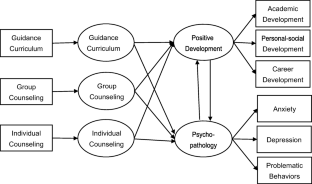
Similar content being viewed by others

What Adolescents Seeking Help Teach us About a School-Based Counseling Service
Roberta Biolcati, Laura Palareti & Consuelo Mameli
Changes in the Participants in a Community-Based Positive Youth Development Program in Hong Kong: Objective Outcome Evaluation Using a One-Group Pretest-Posttest Design
Cecilia M. S. Ma, Daniel T. L. Shek & Jenna M. T. Chen
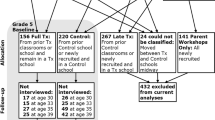
Effects of Social Development Intervention in Childhood on Adult Life at Ages 30 to 39
Rick Kosterman, J. David Hawkins, … Robert D. Abbott
Data Availability
The datasets generated during and/or analysed during the current study are not publicly available due ethical considerations but are available from the corresponding author on reasonable request.
Andresen, E. M., Malmgren, J. A., Carter, W. B., & Patrick, D. L. (1994). Screening for depression in well older adults: Evaluation of a short form of the CES-D. American Journal of Preventive Medicine, 10 (2), 77–84. https://doi.org/10.1016/s0749-3797(18)30622-6 .
Article PubMed Google Scholar
ASCA (2012). The ASCA national model: A framework for school counseling programs (PsycEXTRA Dataset). American Psychological Association (APA).
ASCA (2016). State-by-state student-to-counselor ratio report 10-year trends. https://www.nacacnet.org/globalassets/documents/publications/research/state-by-state-ratio-report.pdf .
Brennan, R. L. (2001). Generalizability theory . Springer-Verlag.
Briesch DuBois, J. M., Briesch, A. M., Hoffman, J. A., Struzziero, J., & Toback, R. (2017). Implementing self-management within a group counseling context: Effects on academic enabling behaviors. Psychology in the Schools, 54 (8), 852–867. https://doi.org/10.1002/pits.22029 .
Article Google Scholar
Burlingame, G. M., McClendon, D. T., & Alonso, J. (2011). Cohesion in group therapy. Psychotherapy, 48 (1), 34–42. https://doi.org/10.1037/a0022063 .
Carey, J., & Dimmitt, C. (2012). School counseling and student outcomes: Summary of six statewide studies. Professional School Counseling . https://doi.org/10.1177/2156759X0001600204 .
Chaves, C., Lopez-Gomez, I., Hervas, G., & Vazquez, C. (2016). A comparative study on the efficacy of a positive psychology intervention and a cognitive behavioral therapy for clinical depression. Cognitive Therapy and Research, 41 (3), 417–433. https://doi.org/10.1007/s10608-016-9778-9 .
Colman, A. M. (2015). Oxford dictionary of psychology. In A. M. Colman (Ed.), Oxford dictionary of psychology . Oxford University Press.
Daunic, A. P., Smith, S. W., Aydin, B., & Barber, B. (2019). Lowering Risk for Significant Behavior Problems Through Cognitive-Behavioral Intervention: Effects of the Tools for Getting Along Curriculum 2 Years Following Implementation. Journal of Primary Prevention, 40 (4), 463–482. https://doi.org/10.1007/s10935-019-00554-3 .
Daunic, A. P., Smith, S. W., Garvan, C. W., Barber, B. R., Becker, M. K., Peters, C. D., Taylor, G. G., van Loan, C. L., Li, W., & Naranjo, A. H. (2012). Reducing developmental risk for emotional/behavioral problems: A randomized controlled trial examining the tools for getting along curriculum. Journal of School Psychology, 50 (2), 149–166. https://doi.org/10.1016/j.jsp.2011.09.003 .
Diedenhofen, B., & Musch, J. (2015). Cocor: A comprehensive solution for the statistical comparison of correlations. PLoS ONE, 10 (4), e0121945. https://doi.org/10.1371/journal.pone.0121945 .
Article PubMed PubMed Central Google Scholar
Doll, B. (2008). The dual-factor model of mental health in youth. School Psychology Review, 37 (1), 69–73. https://doi.org/10.1080/02796015.2008.12087909 .
D'raven, L. L., & Pasha-Zaidi, N. (2014). Positive psychology interventions: A review for counseling practitioners. Canadian Journal of Counseling and Psychotherapy, 48 (4), 383–408.
Google Scholar
Durlak, J. A., & Wells, A. M. (1997). Primary prevention mental health programs for children and adolescents: A meta-analytic review. American Journal of Community Psychology, 25 (2), 115–152. https://doi.org/10.1023/a:1024654026646 .
Eichas, K., Albrecht, R. E., Garcia, A. J., Ritchie, R. A., Varela, A., Garcia, A., Rinaldi, R., Wang, R., Montgomery, M. J., Silverman, W. K., Jaccard, J., & Kurtines, W. M. (2010). Mediators of positive youth development intervention change: Promoting change in positive and problem outcomes? Child & Youth Care Forum, 39 (4), 211–237. https://doi.org/10.1007/s10566-010-9103-9 .
Fang, X., Hu, W., Chen, H., & Wang, F. (2015). Developmental guidance for high school students in China: Status quo and effectiveness. Journal of Beijing Normal University, 247 (1), 47–54.
Fatih, Y., Kadir, O., & Canan, E. (2020). Investigation of the relationship between disease severity and automatic thought and dysfunctional schemes in patients with depression and non-clinical group: A structural equation modeling study. Current Psychology, 9 , 1635–1650. https://doi.org/10.1007/s12144-018-0064-8 .
Fenwick, L. (2018). Standards-based reform to senior-secondary curriculum and metacognition in the literacy domain. Curriculum Journal, 29 (3), 338–353. https://doi.org/10.1080/09585176.2018.1424643 .
Gysbers, N. C. (2004). Comprehensive guidance and counseling programs: The evolution of accountability. Professional School Counseling, 8 , 1–14.
Gysbers, N. C. (2005). Comprehensive school guidance programs in the United States: A career profile. International Journal for Educational and Vocational Guidance, 5 (2), 203–215. https://doi.org/10.1007/s10775-005-8800-7 .
Gysbers, N. C., & Henderson, P. (2012). Developing & managing your School Guidance & Counseling Program (5 th ) . American Association for Counseling and Developments.
Hu, W., Fang, X., Chen, H., Deng, L., & Lin, X. (2015). The relationship between three-domain competences and internalizing and externalizing problems in Chinese high school students. Child Indicators Research, 8 (4), 943–959. https://doi.org/10.1007/s12187-014-9290-2 .
Hui, E. K. P. (1999). Building an effective guidance Service in Hong Kong: A qualitative study. Asia Pacific Journal of Education, 19 (1), 78–88. https://doi.org/10.1080/0218879990190107 .
Hui, E. K. P. (2000). Guidance as a whole school approach in Hong Kong: From remediation to student developments. International Journal for the Advancement of Counselling, 22 (1), 69–82. https://doi.org/10.1023/a:1005494502922 .
Kamm, C., Gebhardt, A., Gonon, P., Bruehwiler, C., & Dernbach-Stolz, S. (2020). Learners' perceptions of a career guidance curriculum in different school-based support systems in Switzerland. Journal of Vocational Education and Training, 72 (3), 375–395. https://doi.org/10.1080/13636820.2019.1610474 .
Khalilzadeh, S., & Khodi, A. (2018). Teachers’ personality traits and students’ motivation: A structural equation modeling analysis. Current Psychology, 12 , 1635–1650. https://doi.org/10.1007/s12144-018-0064-8 .
Lapan, R. T., Gysbers, N. C., & Sun, Y. (1997). The impact of more fully implemented guidance programs on the school experiences of high school students: A statewide evaluation study. Journal of Counseling & Development, 75 (4), 292–302. https://doi.org/10.1002/j.1556-6676.1997.tb02344.x .
Lerner, R. M. (2006). Theoretical models of human developments (Vol. 1): Handbook of child psychology (6th ed). Wiley.
Lerner, R. M., Lerner, J. V., & Benson, J. B. (2011). Positive youth development. Positive Youth Development (pp. 1-17): Elsevier.
Ministry of Education of the People’s Republic of China. (2017). School management standards for compulsory education .
O’Connor, M., Sanson, A., Hawkins, M. T., Toumbourou, J. W., Letcher, P., & Frydenberg, E. (2011). Differentiating three conceptualisations of the relationship between positive development and psychopathology during the transition to adulthood. Journal of Adolescence, 34 (3), 475–484. https://doi.org/10.1016/j.adolescence.2010.06.005 .
Pinquart, M. (2017). Associations of parenting dimensions and styles with externalizing problems of children and adolescents: An updated meta-analysis. Developmental Psychology, 53 (5), 873–932. https://doi.org/10.1037/dev0000295 .
Podsakoff, P. M., MacKenzie, S. B., & Podsakoff, N. P. (2012). Sources of method Bias in social science research and recommendations on how to control it. Annual Review of Psychology, 63 (1), 539–569. https://doi.org/10.1146/annurev-psych-120710-100452 .
Schwartz, S. J., Pantin, H., Coatsworth, J. D., & Szapocznik, J. (2007). Addressing the challenges and opportunities for Today's youth: Toward an integrative model and its implications for research and intervention. The Journal of Primary Prevention, 28 (2), 117–144. https://doi.org/10.1007/s10935-007-0084-x .
Seiffge-Krenke, I., & Gelhaar, T. (2008). Does successful attainment of developmental tasks lead to happiness and success in later developmental tasks? A test of Havighurst's (1948) theses. Journal of Adolescence, 31 (1), 33–52. https://doi.org/10.1016/j.adolescence.2007.04.002 .
Sloane, D. M., & Potvin, R. H. (1986). Religion and delinquency: Cutting through the maze. Social Forces, 65 (1), 87–105. https://doi.org/10.1093/sf/65.1.87 .
Wang, C., Ni, H., Ding, Y., & Yi, C. (2014). Chinese teachers’ perceptions of the roles and functions of school psychological service providers in Beijing. School Psychology International, 36 (1), 77–93. https://doi.org/10.1177/0143034314560623 .
Wang, X. D., Wang, X. L., & Ma, H. (1999). Rating scales for mental health (enlarged edition). Chinese Mental Health Journal.
Whiston, S. C., Brecheisen, B. K., & Stephens, J. (2003). Does treatment modality affect career counseling effectiveness? Journal of Vocational Behavior, 62 (3), 390–410. https://doi.org/10.1016/s0001-8791(02)00050-7 .
Whiston, S. C., Tai, W. L., Rahardja, D., & Eder, K. (2011). School counseling outcome: A meta-analytic examination of interventions. Journal of Counseling & Development, 89 (1), 37–55. https://doi.org/10.1002/j.1556-6678.2011.tb00059.x .
Wood, J. (2006). Effect of anxiety reduction on children’s school performance and social adjustment. Developmental Psychology, 42 (2), 345–349. https://doi.org/10.1037/0012-1649.42.2.345 .
Xu, J., Fang, X., Zhang, J., Lin, D., & Sun, L. (2008). Effect mechanism of family functioning on adolescents emotional problem [in Chinese]. Psychological Developments and Education, 2 , 79–85. https://doi.org/10.16187/j.cnki.issn1001-4918.2008.02.0 .
Yuen, M., Gysbers, N. C., Hui, E. K. P., Leung, K. M., Lau, P. S. Y., Chan, R. M. C., Shea, P. M. K., & Ke, S. S. Y. (2004). University of Hong Kong faculty of education life skills development project . University of Hong Kong.
Zhang, W., Hu, X., & Pope, M. (2002). The evolution of career guidance and counseling in the People's Republic of China. The Career Development Quarterly, 50 (3), 226–236. https://doi.org/10.1002/j.2161-0045.2002.tb00898.x .
Zung, W. W. K. (1971). A rating instrument for anxiety disorders. Psychosomatics, 12 (6), 371–379. https://doi.org/10.1016/s0033-3182(71)71479-0 .
Download references
Code Availability
Not applicable.
Funding for this study was provided by Key research projects of Humanities and Social Sciences of the Ministry of Education of the People’s Republic of China (No. 16JJD880009).
Author information
Authors and affiliations.
Institute of Developmental Psychology, Beijing Normal University, No. 19, XinJieKouWai St., HaiDian District, Beijing, 100875, People’s Republic of China
Qing Xiong & Xiaoyi Fang
Research Centre for High School Students Student Developmental Guidance, Beijing Normal University, Beijing, People’s Republic of China
School of Humanity, Jiangxi University of Finance and Economics, Nanchang, People’s Republic of China
Qing Xiong & Yang Wu
Department of Psychology, Zhejiang Normal University, Jinhua, People’s Republic of China
PLA Strategy Support Force Information Engineering University, Zhengzhou, People’s Republic of China
School of Wisdom Education, School of Computer Science and Technology, Jiangsu University, Zhenjiang, People’s Republic of China
Yuchi Zhang
You can also search for this author in PubMed Google Scholar
Corresponding author
Correspondence to Xiaoyi Fang .
Ethics declarations
Ethics approval.
All procedures performed in studies involving human participants were in accordance with the ethical standards of the institutional and/or national research committee and with the 1964 Helsinki Declaration and its later amendments or comparable ethical standards. The study was approved by the Ethics Committee of the Beijing Normal University.
Consent to Participate
Informed consent was obtained from all individual participants included in the study.
Consent for Publication
Participants signed informed consent regarding publishing their data.

Conflicts of Interest/Competing Interests
The authors report no conflicts of interest in this work.
Additional information
Publisher’s note.
Springer Nature remains neutral with regard to jurisdictional claims in published maps and institutional affiliations.
Rights and permissions
Reprints and permissions
About this article
Xiong, Q., Fang, X., Wu, Y. et al. Guidance and counseling relations to high school students’ positive development and psychopathology: A non-recursive modeling study. Curr Psychol 42 , 4609–4619 (2023). https://doi.org/10.1007/s12144-021-01722-7
Download citation
Accepted : 06 April 2021
Published : 06 May 2021
Issue Date : February 2023
DOI : https://doi.org/10.1007/s12144-021-01722-7
Share this article
Anyone you share the following link with will be able to read this content:
Sorry, a shareable link is not currently available for this article.
Provided by the Springer Nature SharedIt content-sharing initiative
- Group counseling
- Guidance curriculum
- High school students
- Individual counseling
- Positive development
- Psychopathology
- Find a journal
- Publish with us
- Track your research

Sign up for your FREE e-newsletter
You’ll regularly recieve powerful strategies for personal development, tips to improve the growth of your counselling practice, the latest industry news and much more.
We’ll keep your information private and never sell, rent, trade or share it with any other organisation. And you can cancel anytime.
Case Studies
Case studies, case studies and more case studies!
A Counselling Case Study Exploring Loss
Sue and Tom lost their child Jill to leukaemia approximately one year ago. Tom suggested that Sue attend Professional Counselling because she still doesn’t seem to be able to cope with everyday living. For ease of writing the Professional Counsellor is abbreviated to C. A précis of the session is as follows In the first […]
- September 17, 2010
- Case Studies , Relationship & Families
A Counselling Case Study Using CBT
Jocelyn works as a Human Resources Manager for a large international organisation. She is becoming more and more stressed at work as the company is constantly changing and evolving. It is a requirement of her job that she keeps up with this change by implementing new strategies as well as ensuring focus is kept on […]
- March 18, 2010
- Case Studies , Counselling Therapies , Workplace Issues
Drug Addictions and Group Work
A Support Group had been advertised on the display board of the local Drug and Alcohol Treatment Centre in the City where the Counsellor had been seeing each of the members for private counselling prior to the start of the programme. Ten clients enrolled in the group but by 7:15pm only 5 of the ten […]
- September 29, 2009
- Addictions , Case Studies , Group Work
Counselling Case Study: Using REBT
Thomas is a 33 year old married man, who has recently become a father. He explains that he feels his self-esteem has been gradually deteriorating ever since he was married. He says that he can’t find reasons to enjoy life with his wife due to feelings of inadequacy as a husband. In his new role […]
- September 7, 2009
Counselling Case Study: Managing Anxiety
Leah is a 24 year old woman who was recently discharged from the Army on medical grounds. During her four years in the Army, Leah experienced high levels of stress and anxiety which she coped with by drinking heavily. When she presented for counselling, Leah had been sober for 55 days and was seeking strategies […]
- June 5, 2009
- Addictions , Case Studies , Stress Management
Counselling Case Study: Learning to Let Go
Elizabeth came to counselling because she was experiencing intense anger, and was not coping with her life. She complained of failed relationships with her ex-husband, and with another man whom she left her husband to be with. Elizabeth cannot move on from the anger she feels about her failed relationships and she is feeling isolated […]
- June 26, 2008
Counselling Case Study: Social Anxiety
Sasha is a 60 year old woman who has recently retired from a career in teaching. Working for many years in a secondary school environment, Sasha was confident, motivated and dedicated to her work, but at the same time looking forward to retirement so she and her husband could travel and spend more time with […]
- February 11, 2008
- Case Studies , Clinical Mental Health , Stress Management
A Case of Using Logical Consequences
Richard is a 41-year-old plant operator in a heavy machinery company. He works long hours and must start very early each day. Twelve months ago he accepted a transfer from a country location to a capital city 250 kilometres away from his family. Due to financial obligations this was seen as a necessity. He travelled […]
- January 23, 2008
A Case of Using a Person-Centred and Cognitive-Behavioural Approach to Burnout
Brett is a 36 year old man who works as an accountant for a small family business. The business is failing and Brett will probably have to begin the process of “winding it up” in the near future. His commitment to the business and his friends, the business owners, has intensified the level of stress […]
- June 26, 2007
- Case Studies , Clinical Mental Health , Relationship & Families , Workplace Issues
Counselling Case Study: An Overwhelmed Client
Chris came to counselling because he was experiencing increasing feelings of being stressed, overwhelmed and weighed down by his commitments in life. He has been particularly concerned about his negative thoughts and attitude at work and at home and would like to change this. Chris has been seeing a Professional Counsellor for three sessions and […]
- June 1, 2007
- Case Studies , Relationship & Families , Stress Management
A Case of Mid-Life Difficulties
Fritz is 42 years of age and has been in Australia for the past 25 years. He migrated from Germany with his immediate family, comprising of his mother, father and two sisters. At the age of 17 Fritz was filled with great dreams and aspirations for his new life in a new country and until […]
- May 14, 2007
- Case Studies , Lifespan Development , Multicultural Issues , Relationship & Families
A Case of Stressful Life Change
Author: Jane Barry A précis of the sessions is as follows. For ease of writing the Professional Counsellor is abbreviated to “C”. In the first session, “C” asked some open questions to prompt Mary to start discussing her dilemmas. Mary was able to convey the events leading up to her problems clearly, although was reduced […]
- April 23, 2007
- Case Studies , Children & Adolescents , Disability Issues , Relationship & Families , Trauma & Disaster Mental Health
Counselling Case Study: Relationship Problems
Mark is 28 and has been married to Sarah for six years. He works for his uncle and they regularly stay back after work to chat. Sarah has threatened to leave him if he does not spend more time with her, but when they are together, they spend most of the time arguing, so he […]
- April 16, 2007
Counselling Case Study: Domestic Violence
The client, Gary, called to make his first appointment and said he was persuaded by “a mate” to attend counselling to control his anger. In short Gary was a perpetrator of physical abuse against his intimate female partner, Julie, who is 22 years of age. The couple have no children but his partner has recently […]
- March 27, 2007
A Case of Loss and Grief
Jim had come to counselling to seek help with dealing with the sale of his late mother’s estate. He was experiencing a lot of anger with the issue and also with his brother, Frank, who was joint inheritor. Frank was facing bankruptcy and needed the proceeds of the sale of the family home to save […]
- March 23, 2007
- Case Studies , Loss & Grief , Relationship & Families
Psychology Discussion
Guidance and counselling: tools and techniques | psychology.
ADVERTISEMENTS:
Guidance is the scientific procedure for assisting an individual. Various types of tools and techniques are used for measuring the potentialities of the individual the guidance purpose.
The following are the main tools and techniques which are employed in guidance services:
1. Observation Technique:
The observation technique is not frequently used in guidance and counselling. This is a subjective technique even it is indispensable techniques. For the children no other tool and technique can be used except the observation schedule.
Advantages of Observation:
Observation has certain advantages over the personality test as an approach to understanding children from the practical standpoint. Even hit-or-miss incidental observation gives one a ‘feeling’ for the child’s personality that the test score or even an analysis of the responses to the individual items cannot give. Observation is a relatively ‘free’ situation-one in which the pupils feel the absence of adult pressure-may reveal important aspect of the personality.
This possibility vanished, however, when the pupil knows he is under observation. Then too, observing does not interfere with the usual school activities as testing does. Finally, one can usually see how the child responds in social situations, and note how he reacts to frustrating situations.
Limitations of Observation:
Unfortunately there are many difficulties inherent in the process of observation. In addition to the fact that observation is a highly skilled technique, it is almost impossible for most teachers to spend enough time in observing to enable them to get a well-rounded picture of the child’s personality-in-action.
Errors of properly, or if the observer has no other knowledge of the child, misinterpretation of the meaning of his behaviour is frequent. Bias, of course, on the part of the observer will vitiate the result. In many situations, too, the child, particularly the older child or adolescent, will ‘cover up’ so as to conceal his true feelings. Finally, the same behaviour at different times may not have the same meaning.
Methods of Improving Observation:
Observation may be improved by keeping careful records of the behaviour, preferable writing the observation dawn at the time or, if that cannot be done, as soon afterwards as possible. It is important to pay particular attention to the setting and, if that is vague or equivocal, to forbear from recording the observation.
It is also helpful to record separately the direct observation and the inference drawn from it; this makes possible check by another person on the validity of the interpretation. Simultaneous observation with another capable person and comparison of records afterward is a good method of improving the quality and accuracy of one’s own work.
If the unit of observation are too short, will be highly reliable, but often unimportant observations are likely to be the result. One individual should be observed for measuring one variable at one time. The anecdotal record or check lists prepared in advance may be used.
The Diary Record Method:
Detailed observation of one child is usually for the purpose of comparison with other data already at hand, and to determine the kinds of situations in which he has difficulty. For this purpose a running diary account of the pupil’s behaviour is usually the most length of time and in a variety of situations.
The elementary child may be watched in class, on the playground, in the halls of the child, on the way home, and if possible in the home; the secondary pupil, in the home-room, in various classes, during examinations, in the study hall or library, at a club meeting, or in a child dance, in the child criteria, and in games or sports with his peers.
2. Interview Technique:
Another important technique is the interview technique which is used for collecting information’s about the individual by interview his parents and pears or other family members. It has also some limitations to have the reliable data.
Value of Information from Parents:
From the standpoint of diagnosis, there are two immediate reasons why parents should be seen by the elementary child teacher—to gather sufficient knowledge about a child to provide him with the most suitable educational experiences, and to obtain additional insight into the causes of the behaviour of the child who already has difficulties in adjustment.
The same two reasons apply to the secondary child teacher as well, although the problem of contacts with the parents of the adolescent is complicated by the implied reflection on his feeling of personal worth.
Information for the first of these purposes may sometime be obtained through a questionnaire plus short contacts after child affairs or parents teacher meeting. Although home visits are usually desirable, in most communities teachers do not have time to visit the homes of many of their pupils.
Suggestions for Conducting Interviews:
When the child has shown difficulties in adjustment, it is usually advisable for interviews to be held with at least one of the parents and preferably both. This is frequently difficult to arrange, in view of the many duties of the teacher and the parents, but it usually can be effected by some sacrifice on the part of both. The conference will be facilitated or hindered by the general attitude on the part of the parents toward the child, and by the community’s conception of the role of the teacher.
If the parents have a negative attitude toward the child, and if there is common belief that the teacher’s functions is that of drilling on the three R’s the teacher’s first job will be to establish a friendly attitude before further progress can be made. The teacher should also be alert to differences in cultural background between himself and the parents, to speak in laymen’s language and yet avoid ‘talking down.’
He must appreciate that many parents resent an inquiry into their personal affairs, and in dealing with the parents of problem children he should expect to find many who will be quick to interpret innocuous comments as placing blame on them.
In talking with the parents of young children he should be sensitive to a possible feeling of rivalry on the mother’s part, for the teacher is often the first adult outside the family circle to have an appreciable influence on the child.
Often, too, the parents feel that the child situation is the sole cause of the problem behaviour and that they themselves have no responsibility in the matter. It is particularly important for the teacher to convince the parents that confidence will be scrupulously respected.
3. The Cumulative Record:
The cumulative record means of keeping readily available permanent data about a child. These data in themselves are likely to aid the teacher in appraising the child’s assets and liabilities. The record can also serve as a source of new knowledge if an analysis of the meaningful relationships among the different items is made.
An especially complete record card includes spaces for the following:
i. Tests:
Intelligence and standardized achievement;
Elementary and high school;
Occupation and nationality of parents, names and ages of siblings, languages spoken;
iv. Health:
Medical examination, physical development, defects, and treatment;
v. Prolonged absences, with causes;
vi. personality-short description by teacher;
vii. vocation-educational aim, vocational aim, special interests,
viii. Vocation-educational aim, vocational aim, special interests, outside employment, school activities;
ix. Records of conferences with pupil-important attitudes, remarks, and decisions.
One can easily see how such a record would provide a valuable basis for guidance of the student in selecting courses, curricula, advanced educational, and a vocational career. It is useful in understanding the maladjusted pupil chiefly as a source of clues for further inquiry. Obviously such a brief compilation of more or less objective data cannot include the type of information needed to understand the sources, and dynamic factors in, most pupil maladjustments.
4. Adjustment Inventory or Schedule:
Adjustment schedules are frequently called self-report blanks, adjustments questionnaires, or inventories. It is impossible to differentiate them clearly from ‘tests’ designed to measure such personality traits as introversion, self-confidence, etc., since most, if not all, aspects of personality are related to adjustment. The purpose of adjustment schedules is to estimate an individual’s degree of adjustment or maladjustment.
In their preparation, as series of questions designed to reveal attitudes, feelings and behaviour indicative of maladjustment is gathered, attempts are made to validate them and they are administered to a representative group, norms are established. Thus, when the inventory is subsequently administered to an individual, the degree of maladjustment indicated by these responses can be compared with those of the original group.
Uses of Adjustment Inventory:
Adjustment inventories cannot yield conclusive assessment due to the following reasons:
i. It is difficult to formulate diagnostic questions which are understood by all and have the same meaning for all.
ii. It is not possible by the use of the inventories which limits to true or false; it is an inventory to expose the extent of adjustment.
iii. An adjustment inventory can be validated.
iv. It is not the reliable. It cannot differentiates.
v. It depends on frankness of the subject in responding.
The adjustment inventories are useful in school situations may be summarized as follows:
i. For identifying some of the pupils needing special aid in adjustment. Those who need help but cannot bring themselves to answer the questions frankly will, of courses, have been located through some other means.
ii. For uncovering unsuspected personal problems through noting an pupil’s answers to the specific questions. The existence of such problems must then be verified through other techniques.
iii. For discovering clues to the basis of the adjustment difficulty by means of a thorough analysis of the answers.
iv. For confirming a suspected maladjustment of a pupils when other evidence yields inconclusive data. (A low score, however, would leave the issue undecided).
Types of Adjustment Inventories:
The adjustment inventories are related to different areas—Home, Health, Social, emotional and School.
These inventories are of the following types:
(i) For elementary child pupils.
(ii) For high child students, and
(iii) For college students or adults.
5. The Case Study:
The case study is the most comprehensive of all methods of special inquiry for use with maladjusted children or with those who exhibit unusual but undeveloped abilities. Such a study is often made by a specialist, though teachers are finding an increasing need to use this device in the course of their professional work.
The case study is employed in a variety of situations. It is an attempt to synthesize and interpret the material gathered by the other techniques for the purpose of making an inclusive picture of the individual and of the background factors affecting his life.
Items of Include in a Case Study:
The amount and kin of information in any one are varies greatly in accordance with its relevance to the particular individual studied, the adequate case study will, with certain exceptions, include information in the nine areas listed below. In accordance with its relevance to the particular individual studied, the adequate case study will, with certain exceptions, include information in the nine area listed below.
In accordance with Allport’s suggestion that “successful case studies seem naturally to fall into three sections – (a) A description to the present status, (b) An account of past influences and successive stages of development, and (c) An indication of future trends,” the topic have been arranged in that fashion.
Allport’s Nine Areas of Case Study :
Suggestions for specific items in the areas must of necessity be tentative. So many variable affect the nature of the information gathered—age, sex, type of problem, to mention but a few-that inevitably some irrelevant items are included and many relevant items are omitted. An attempt has been made to be inclusive rather than brief because many case studies made by teachers and other workers in child have come to erroneous or unsure conclusion owing to the commission of items crucial to understanding the case.
Steps in Conducting a Case Study:
Case studies usually begin with certain identifying data. These include the child’s name, address, age, sex, grade, nationality, colour and religion.
Frequently, too, a very brief description of his physical appearance and a thumbnail sketch of his personality are included. The purpose is to orient the reader or to recall that particular child to the writer of many case studies.
The next topic covered should be the problem, but after that the order of topics depends upon the specific case investigation.
The following information’s are to be collected:
a. Problem at present,
b. Education at present,
c. Intelligence,
d. Health and physical conditions,
e. Development at present,
f. Personality make up,
g. Social adjustment,
h. Educational status if any, and
i. Family conditions-economic and cultural level.
This material should enable one to judge whether the problem originated in the home, the child, or both. In this area one is especially likely to find background material that goes a long way to explain the child’s behaviour.
The Case Study Materials:
In child the best procedure in starting a case study is to assemble the information already collected on the child. The cumulative record, if available, should be consulted first. Usually it is necessary to arrange for tests as the ones on file are not likely to be recent enough. If there is the slightest indication of a physical basis for the problem, a thorough medical examination should be made.
The usual medical examination by the child physician is almost certain to be too superficial to be of much use. Interviews should usually he held with the parents, and the child should be observed in as many situations as can be arranged. Interviews with the child are essential, as only through this means can one establish the type of relationship necessary for understanding the problem and aiding readjustment.
A Diagnosis:
After the material considered pertinent is gathered, there must be an attempt to synthesize; it by comparing the information in the different sections and interrelating it. The purpose is to make a diagnosis, which may be defined as a description of the maladjustment together with the causative factors in both the past and present.
The process is exceedingly difficult; it frequently happens that even when the expert draws on all the psychological and social knowledge at his command he still finds that the case remains unexplained. Certainly the teacher in attempting a diagnosis must use the knowledge of his own motivation and his experiences with other, taking what precautions he can against his own bias.
Remedial Measures:
All the methods of approach to understand the child, constitute at the same time an opening for the prevention of maladjustment. It is through such methods that the teacher can acquire the knowledge of the child’s particular assets and liabilities and of the factors at the basis of his difficulty which are indispensable to the proper use of corrective procedure assets and liabilities and of the factors at the basis of his difficulty which are indispensable to the proper use of corrective procedures.
General prescriptions for handling children’s problems must be of limited value; only the person who understands the specific child can judge whether or not the suggested method of handling is wise or unwise.
window._taboola = window._taboola || []; _taboola.push({ mode: 'thumbnails-a', container: 'taboola-below-article-thumbnails', placement: 'Below Article Thumbnails', target_type: 'mix' });
Related articles:.
- 8 Main Services Needed for Elaborate Programme of Guidance | Psychology
- Counselling to Exceptional Children | Psychology
- Guidance: Definitions, Types and Characteristics | Term Paper | Psychology
- Difference between Guidance and Counselling | Psychology
Psychology , Guidance , Guidance and Counselling
- ACS Foundation
- Diversity, Equity, and Inclusion
- ACS Archives
- Careers at ACS
- Federal Legislation
- State Legislation
- Regulatory Issues
- Get Involved
- SurgeonsPAC
- About ACS Quality Programs
- Accreditation & Verification Programs
- Data & Registries
- Standards & Staging
- Membership & Community
- Practice Management
- Professional Growth
- News & Publications
- Information for Patients and Family
- Preparing for Your Surgery
- Recovering from Your Surgery
- Jobs for Surgeons
- Become a Member
- Media Center
Our top priority is providing value to members. Your Member Services team is here to ensure you maximize your ACS member benefits, participate in College activities, and engage with your ACS colleagues. It's all here.
- Membership Benefits
- Find a Surgeon
- Find a Hospital or Facility
- Quality Programs
- Education Programs
- Member Benefits
- April 2024 | Volume 109, I...
- Understanding Surgical CPT...
Understanding Surgical CPT Coding Essentials Will Help Ensure Proper Reimbursement
Megan McNally, MD, FACS, Jayme Lieberman, MD, FACS, and Jan Nagle, MS
April 10, 2024
Numerous Current Procedural Terminology (CPT)* coding questions raised during ACS coding courses and received via the ACS Coding Hotline underscore the need to explain key coding concepts in order to ensure accurate coding.
This article examines crucial coding concepts through fictional cases that should be familiar to general surgeons and related surgical specialties.
Laparoscopic Liver Biopsy
Case: While performing a laparoscopic appendectomy for appendiceal carcinoma, the surgeon also performs a liver biopsy of a suspicious lesion. Reportable codes include the following: 44970, Laparoscopy, surgical, appendectomy, and 47379, Unlisted laparoscopic procedure, liver.
Concept: It would not be appropriate to report add-on code 47001, Biopsy of liver, needle; when done for indicated purpose at time of other major procedure (List separately in addition to code for primary procedure), for the biopsy procedure. The intent of code 47001 has always been for a liver biopsy at the time of an open procedure as discussed in the AMA CPT Assistant 1992 Code Update (Winter 1991) after code 47001 was established. Additional CPT Assistant articles have reinforced that 47001 may only be reported for a liver biopsy via an open approach. Therefore, code 47379 should be reported when a liver biopsy is performed via a laparoscopic approach in addition to a laparoscopic primary procedure and add-on code 47001 should be used as a “proxy” for charges. This information supersedes guidance that was provided in the October 2018 ACS Bulletin column “CPT Coding for Hepatobiliary Surgery.”
Case: A patient with hepatocellular carcinoma underwent an exploratory laparoscopy to obtain a liver biopsy and assess the peritoneal cavity to exclude advance disease. The reportable code is 47379, Unlisted laparoscopic procedure, liver.
Concept: It would not be appropriate to report 49321, Laparoscopy, surgical; with biopsy (single or multiple) if the biopsy is the only laparoscopic procedure performed as this code is in the Abdomen, Peritoneum, and Omentum subsection of CPT and not the Liver subsection. For this clinical scenario, code 47379 should be reported and code 49321 should be used as a “proxy” for charges. This information supersedes guidance that was provided in the October 2018 ACS Bulletin column “CPT Coding for Hepatobiliary Surgery.”
Laparoscopic Appendectomy for Perforation
Case: A patient undergoes a laparoscopic appendectomy for perforated appendicitis requiring significantly more work than a typical laparoscopic appendectomy. The reportable code is 44970, Laparoscopy, surgical, appendectomy.
Concept: Although there are separate codes to differentiate an open appendectomy without rupture (44950) and with rupture (44960), there is only one code for a laparoscopic appendectomy (44970), and it is used to report a laparoscopic appendectomy for either scenario; with rupture or without rupture. It would not be correct to report 44979, Unlisted laparoscopy procedure, appendix for a laparoscopic appendectomy for perforation with abscess and peritonitis and use the open code 44960, Appendectomy; for ruptured appendix with abscess or generalized peritonitis as a “proxy” for charges. However, depending on the amount of extra time and/or work effort required when compared to a laparoscopic appendectomy without rupture, it may be appropriate to append modifier 22, Increased procedural services. Documentation must support the substantial additional work and the reason for the additional work (i.e., increased intensity, time, technical difficulty of procedure, severity of patient’s condition, physical and mental effort required).
Adjacent Tissue Transfer after Breast Surgery
Case: Immediately following a lumpectomy, the surgeon performs reconstructive tissue rearrangement including dissection through the breast parenchyma in order to create a pedicled flap of breast tissue that is then transposed into the defect to improve the contour of the breast. Reportable codes include the following: 19301, Mastectomy, partial (e.g., lumpectomy, tylectomy, quadrantectomy, segmentectomy) and code(s) for adjacent tissue transfer as appropriate (14000-14041, 14301-14302).
Concept: Reporting adjacent tissue transfer for immediate, partial breast reconstruction following lumpectomy is possible, although it requires the specific criteria for reporting adjacent tissue transfer. In addition to a description of the defect, it requires full documentation of the incisions required to create the pedicled flap of breast tissue, preservation of vascularity, the dimensions of the tissue mobilized, and the technique for transfer of the tissue into the defect. Undermining of the breast tissue off the pectoralis major muscle alone or undermining tissue within the breast parenchyma to advance tissue for primary repair is not considered adjacent tissue transfer and is bundled with the partial mastectomy code and not separately reportable.
Endocrine Surgery
Ca se: A patient underwent a right thyroid lobectomy years ago. It is now necessary to go back and remove the rest of the right lobe and also remove the left lobe (previously untouched). Reportable codes include the following: 60260-RT, Thyroidectomy, removal of all remaining thyroid tissue following previous removal of a portion of thyroid, and 60220-LT-59, Total thyroid lobectomy, unilateral; with or without isthmusectomy.
Concept: This reporting is based on the fact that 60260 is considered a bilateral procedure and since the left lobe was previously untouched, it would be incorrect to report a code for removal of remaining tissue when a total lobectomy is performed.
Case: A patient had a left lobectomy on March 1. On March 14, the patient is taken back to surgery by the same surgeon for a right thyroid lobectomy after pathology showed a malignancy in the right thyroid lobe. Reportable code for the first operation: 60220-LT, Total thyroid lobectomy, unilateral; with or without isthmusectomy. Reportable code for the subsequent operation: 60220-RT-58.
Concept: Modifier 58 is appended to the second operation because it was a “staged or related procedure or service by the same physician or other qualified healthcare professional during the postoperative period.”
The ACS collaborates with KZA, Inc. on courses that provide the tools necessary to increase revenue and decrease compliance risk. These courses are an opportunity to sharpen your coding skills. You also will be provided online access to the KZA alumni website, where you will find additional resources and other FAQs about correct coding. Information about the courses can be accessed on the KZA website .
In addition, as part of the College’s ongoing efforts to help members and their practices submit clean claims and receive proper reimbursement, a coding consultation service—the ACS Coding Hotline—has been established for coding and billing questions. ACS members are offered five free consultation units (CUs) per calendar year. One CU is a period of up to 10 minutes of coding services time. Access the ACS Coding Hotline website today .
Dr. Megan McNally is a surgical oncologist at Saint Luke’s Health System in Kansas City, Missouri, and assistant clinical professor in the Department of Surgery at the University of Missouri-Kansas City School of Medicine. She also is a member of the ACS General Surgery Coding and Reimbursement Committee and an ACS advisor to the AMA CPT Editorial Panel.
*All specific references to CPT codes and descriptions are ©2023 American Medical Association. All rights reserved. CPT is a registered trademark of the American Medical Association.
Related Pages
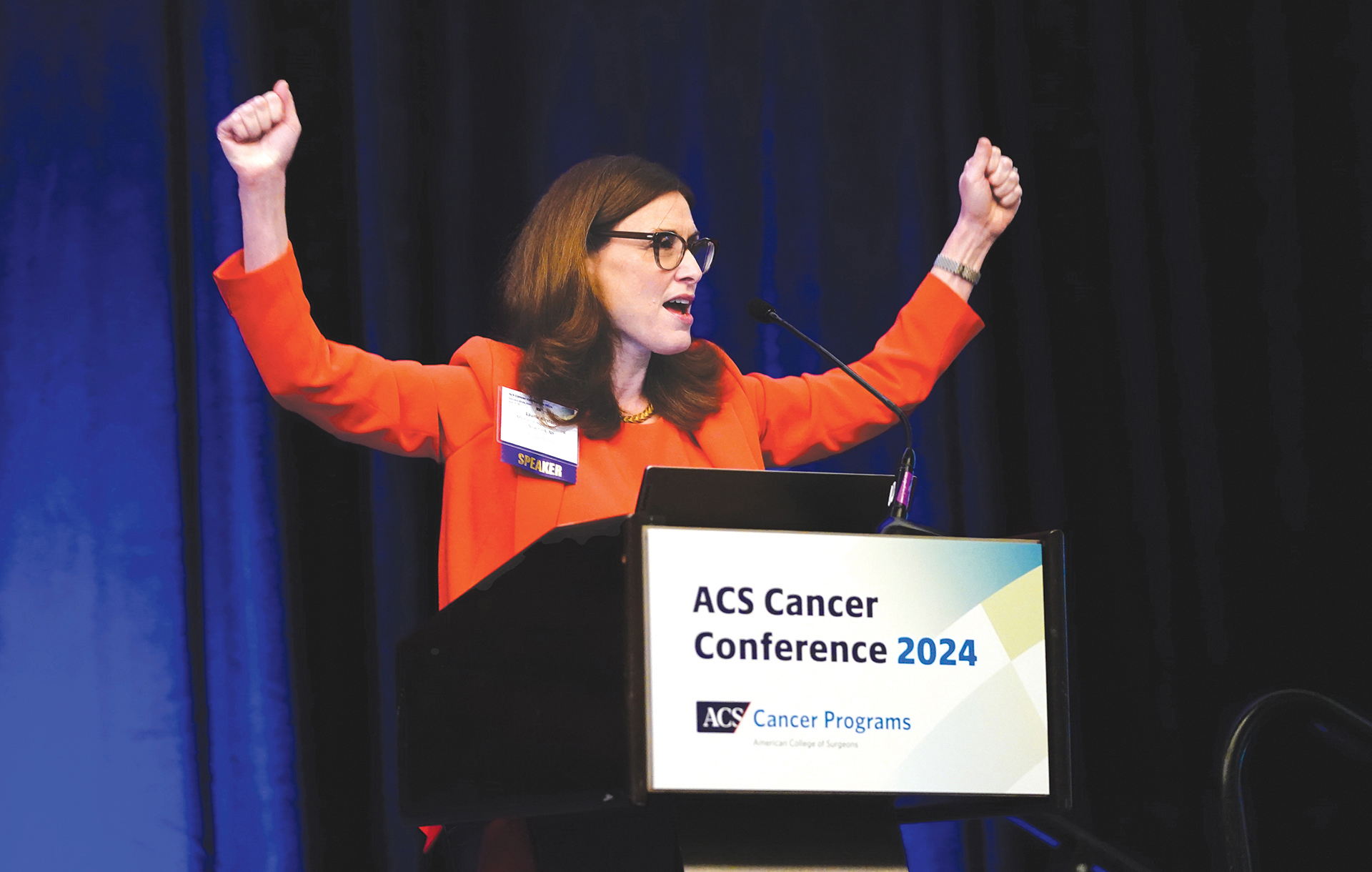
ACS Cancer Conference Highlights Quality Efforts, Current Complexities in Cancer Care
Sessions highlighted new information on standards and data collection, and offered insights into the new pediatric accreditation standards.
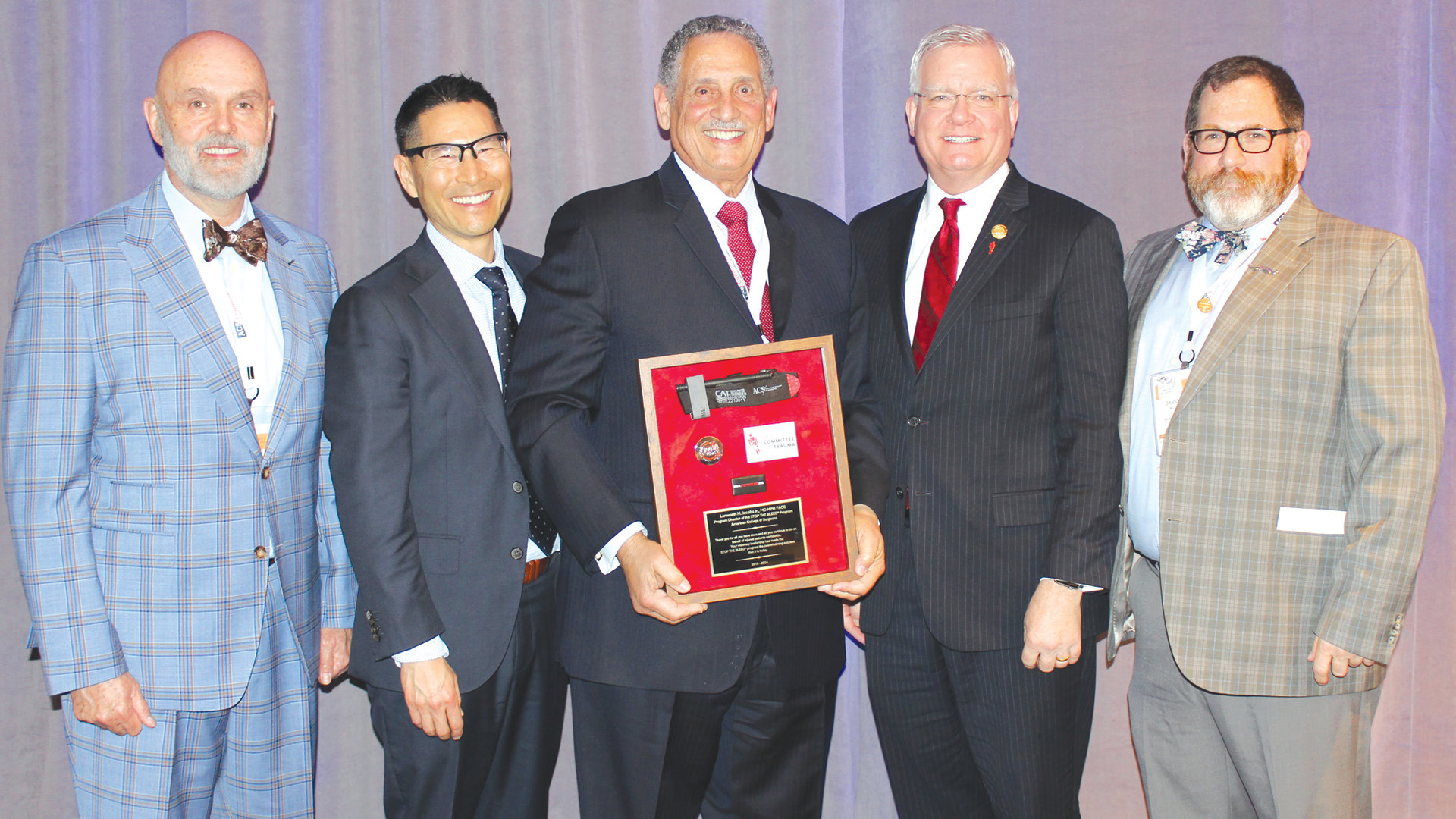
Trauma Meeting Spotlights New Image-Focused STOP THE BLEED Course
A Special Session at the COT Annual Meeting provided an overview of the new version of the STOP THE BLEED course.

ACS Statement Guides Surgeons in Telehealth Practices
The ACS Board of Regents approved a new policy statement on telehealth at its February 2023 meeting.

JACS Highlights
Read capsule summaries of articles appearing in the April 2024 issue of the Journal of the American College of Surgeons.
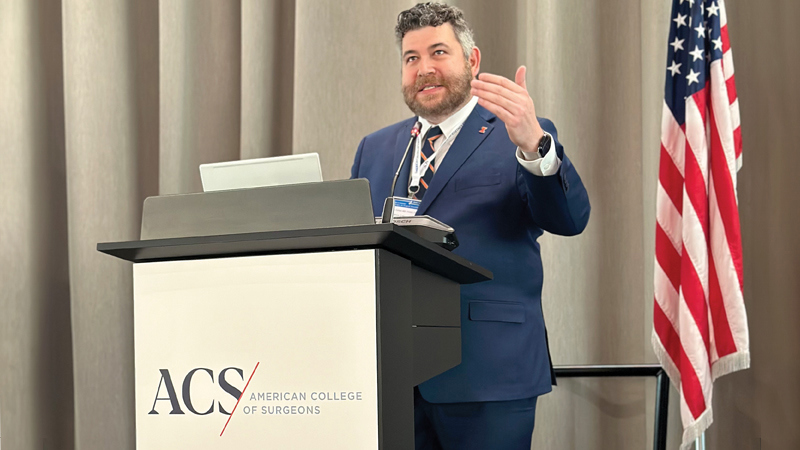
Engineering Surgical Innovation Is a Joint Effort
The Annual Surgeons and Engineers meeting hosted its first DIY simulator/model competition and provided a platform for innovative collaboration.
In Memoriam: Dr. Edward (Ted) Copeland, ACS Past-President
Renowned breast cancer surgeon and ACS Past-President Dr. Edward Copeland passed away March 31, 2024, at the age of 86.
Member News April 2024
Learn more about ACS members who have been recognized for noteworthy achievements.

ACS’s Advocacy Achievements
Dr. Turner addresses the importance of surgeon advocacy and details some recent successes.
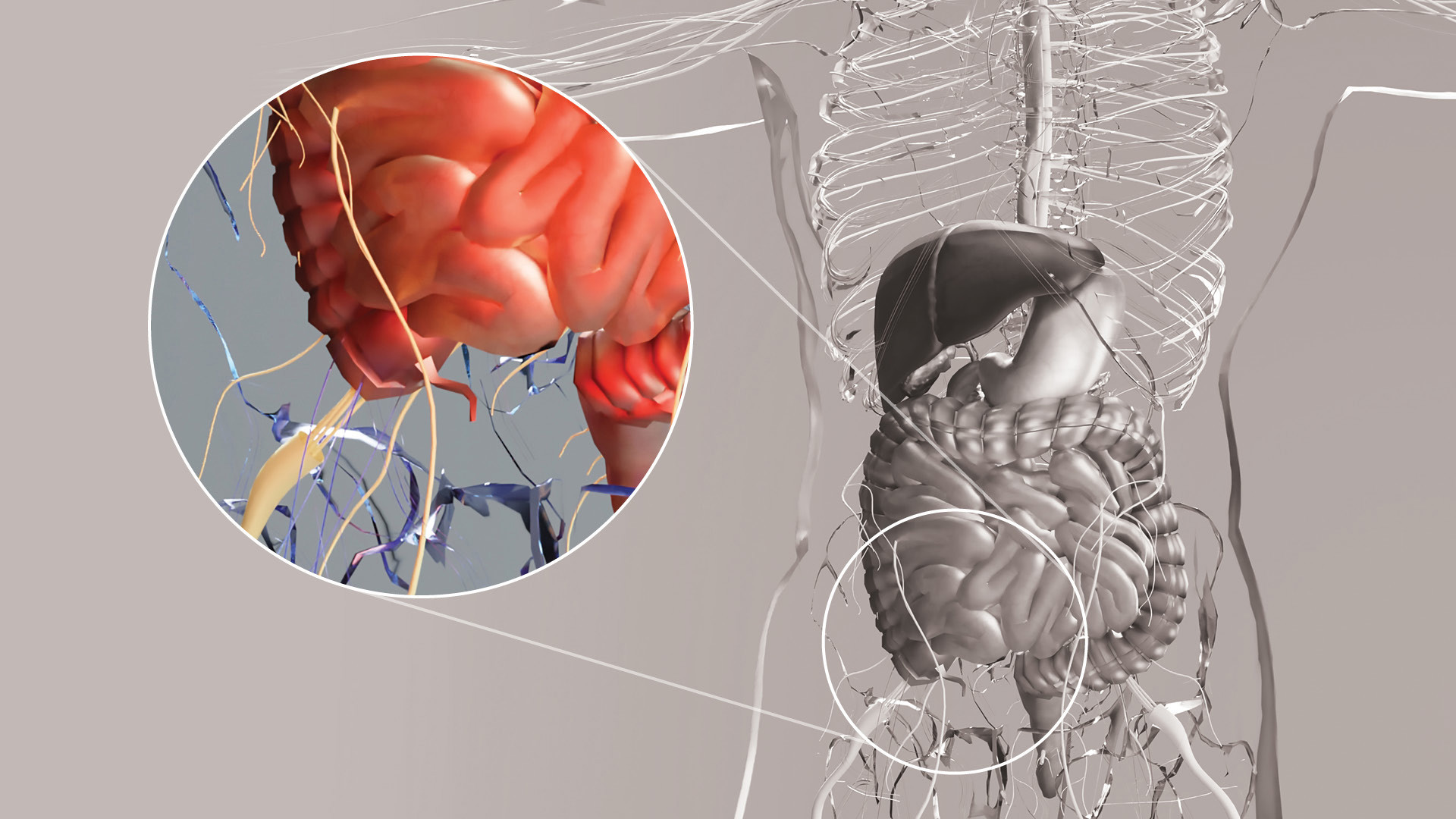
Are Antibiotics the Answer to Treating Appendicitis?
Discover new perspectives on operative versus nonoperative approaches to managing uncomplicated acute appendicitis.

For Optimal Outcomes, Surgeons Should Tap into “Collective Surgical Consciousness”
Learn about the role of AI in medical imaging and its potential impact on patient decision-making.
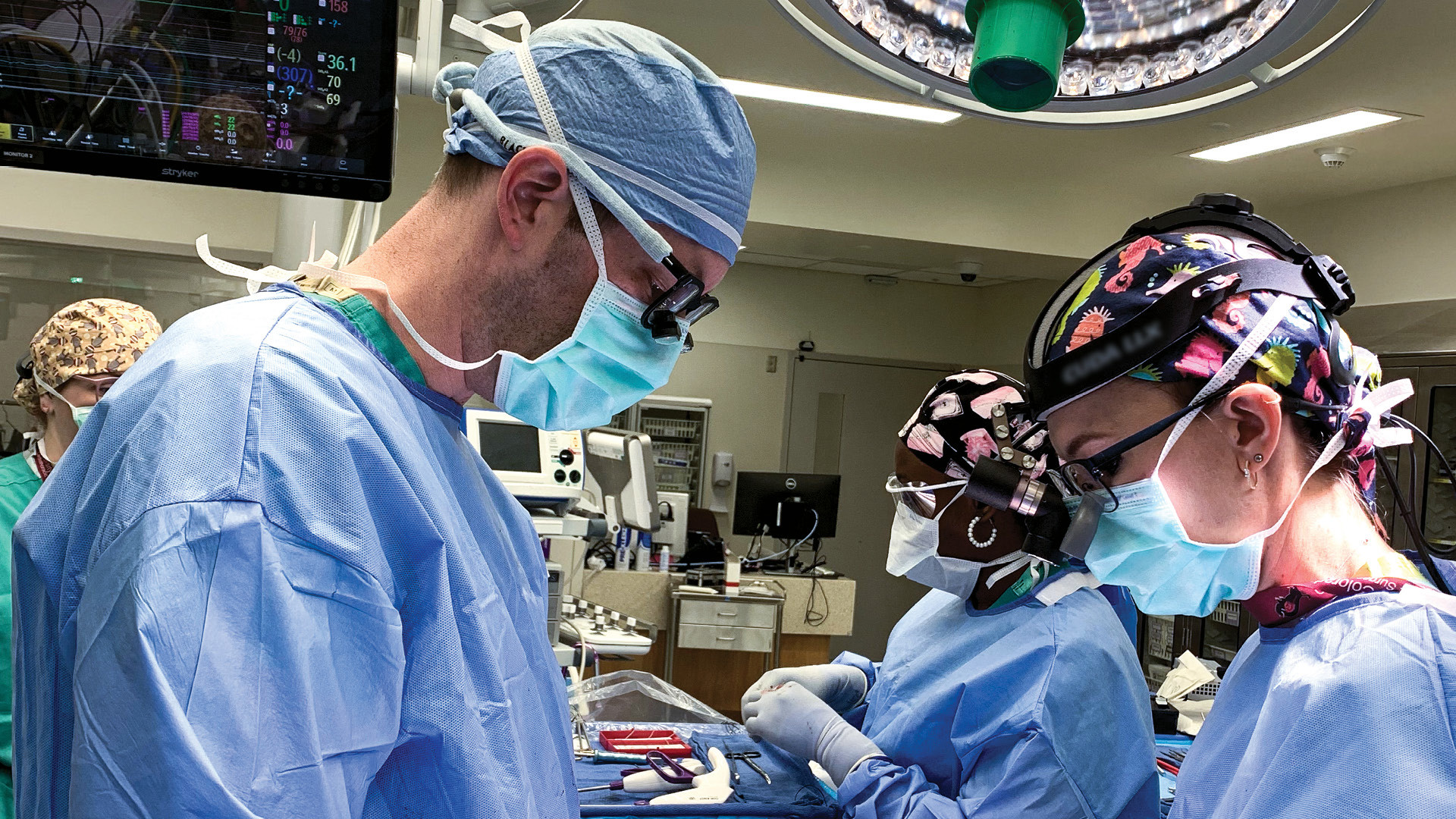
New Technologies, Approaches Help Surgeons Maximize the Use of Transplant Organs
Read about innovative advancements that help recover, preserve, and rehabilitate donor organs in an effort to streamline the allocation process.

Physician Workforce Data Suggest Epochal Change
Gain new perspectives on current and future surgeon workforce supply culled from the AAMC’s US Physician Workforce Data Dashboard.

Artificial Intelligence: The Future Is Now
Surgeons are encouraged to take an active role in the adoption of AI to ensure the quality of care and safety of our patients.

Artificial Intelligence: The Future Is What We Make It
Members of the ACS Health Information Technology Committee respond to Dr. James Elsey's insights on AI in healthcare.

IMAGES
VIDEO
COMMENTS
For example, the ABC Level 4 Diploma in Therapeutic Counselling requires you to write two case studies as part of your external portfolio, to meet the following criteria: 4.2 Analyse the application of your own theoretical approach to your work with one client over a minimum of six sessions. 4.3 Evaluate the application of your own theoretical ...
Counselling Client Case Study First Impressions. Janine is a 46 years old woman, she is a tall slim lady with a warmth in her smile, however I noticed she rolled her shoulders forward, almost hunching over, appearing less confident. Janine sat very neatly in the chair looking smaller than I expected due to her height, she had a soft tone when ...
this book are described and illustrated through the case studies. Each case study is unique and distinctive, with each offering a rare opportunity for mental health prac-titioners to get a bird's-eye view of what happens around the world. Therefore, the study of these cases individually and collectively will yield a wealth of information
This case study examines the author's therapeutic experience with one client presenting with anxiety, whilst working remotely due to the COVID-19 pandemic. ... In line with counseling psychology value of the client's subjectivity (Manafi, ... my supervisor's guidance allowed me to make sense of Robert's difficulties, thus enriching the ...
A case study is an in-depth study of one person, group, or event. In a case study, nearly every aspect of the subject's life and history is analyzed to seek patterns and causes of behavior. Case studies can be used in many different fields, including psychology, medicine, education, anthropology, political science, and social work.
The anatomy of a case study. At its core, a case study is an in-depth examination of an individual or group. In the realm of guidance and counselling, it's akin to a detective gathering clues to solve a mystery. But instead of a crime, the 'case' is an individual's life journey. A well-constructed case study weaves together different ...
Supervision is also an extremely critical aspect of the professional school counsel-or's career, training, development, and success. As a field, we understand that supervi-sion is imperative for ethical decision making, growth, and the prevention of burnout ( Remley & Herlihy, 2010 ). Supervision could take place in the school if other school ...
School guidance and counseling services are important for adolescent development. This study focused on the predictive role of three main delivery strategies (guidance curriculum, group counseling, and individual counseling) on students' positive development (academic, personal-social, career) and psychopathology (anxiety, depression, problem behaviors) in the high school context. Cross ...
Journal overview. The aim of the British Journal of Guidance & Counselling is to publish work that sets trends and provokes fresh thought and innovation in the practice and understanding of counselling, psychotherapy and career guidance. The journal seeks to communicate, enrich and advance theory, research, policy and practice in these fields.
Case study research in counselling and psychotherapy, by J. McLeod, London, Sage, 2010, 272 pp., £21.99 (paperback), ... British Journal of Guidance & Counselling Volume 39, 2011 - Issue 5. Submit an article Journal homepage. 669 Views 3 ...
"shyness" and an "existential viewpoint" in counseling. Following a discussion of these terms, will be a review of the related literature, a brief defense and description of the procedure of study, two individual case studies, and lastly, implications and conclusions of this study. 2
Purpose: This study aims to explain the understanding, basic concepts, planning, implementation, evaluation, and assessment of project-based learning management and case-based learning in guidance ...
A Case Study on Guidance and Counseling: Effects of Broken Family on Students' Behavioral Development and Academic Success In Partial Fulfilment of the Requirements of the Subject MaEd 136: Guidance and Counseling By DOMINGO, Leslie Ann A. GAPAYAO, Charmie O. JANIOLA, Rodelyn Blase MENDOZA, Jayson A. MENDOZA Jubilee L. PELIÑO, Gretcel P.
Narrative therapy using a reflecting team: An ethnographic study of therapists' experiences. Contemporary Family ... She is the author of Theories of Counseling and Psychotherapy: A Case ... involved in both the MA program in Counseling and Guidance and the PhD program in Counseling Psychology. Her research interest includes understanding ...
Abstract. The purpose of the study was to examine the role of guidance and counseling in enhancing student discipline in secondary schools in Koibatek district. The study was guided by Alfred Adler (1998) theory of personality, and humanistic theory of Albert Bandura (1995) social learning model. The study adopted a descriptive survey research ...
Counselling Case Study: Using REBT. Thomas is a 33 year old married man, who has recently become a father. He explains that he feels his self-esteem has been gradually deteriorating ever since he was married. He says that he can't find reasons to enjoy life with his wife due to feelings of inadequacy as a husband.
The purpose of the study was to reveal the guidance and counseling students' perception of the practices of Islamic counseling. This study applied qualitative approach. The design of the study was case study. The data were collected through in-depth interviews, open-ended qualitative questionnaire, and photo voice. The data were analyzed using thematic analysis. The data were validated through ...
One study in Northern Ireland has reported on the impact of a professionally-delivered, face-to-face school counselling intervention for young people who have been bullied (McElearney et al., Citation 2013). The counselling was delivered for six-to-eight sessions, each lasting between 35 and 60 min.
A Phenomenological Case Study Introduction Guidance and counselling is the process of helping individuals discover and develop their educational, vocational, and psychological potentialities and thereby to achieve an optimal level of personal happiness and social usefulness. Globally, guidance and counselling is an important aspect in
Guidance and counselling is a crucial educational tool that shapes a child's orientation from negative perceptions that could be planted in their minds by their peers. Schools require counsellors ...
The observation technique is not frequently used in guidance and counselling. This is a subjective technique even it is indispensable techniques. ... The Case Study: The case study is the most comprehensive of all methods of special inquiry for use with maladjusted children or with those who exhibit unusual but undeveloped abilities. Such a ...
The study showed that the teachers' level of formal training in counselling skills did not affect the students' perception of the guidance and counselling department in terms of their inclination to seek counselling services. The main objective of this study was to investigate students' perception of the guidance and counselling programme in two randomly selected Loreto Schools in ...
A sample size of 368 respondents comprising of 12 deans of studies, 12 guidance and counselling teachers,12 form three and 12 form four parents' representatives, 8 principals and 312 form three ...
This column provides guidance on commonly asked coding questions through fictional case studies. This column provides guidance on commonly asked coding questions through fictional case studies. Unsupported Browser. The American College of Surgeons website is not compatible with Internet Explorer 11, IE 11. ...
This Case Study House was built in the 1960s and features concrete flooring and floor-to-ceiling glass windows. ... give guidance, and schedule home tours. First and last name required.